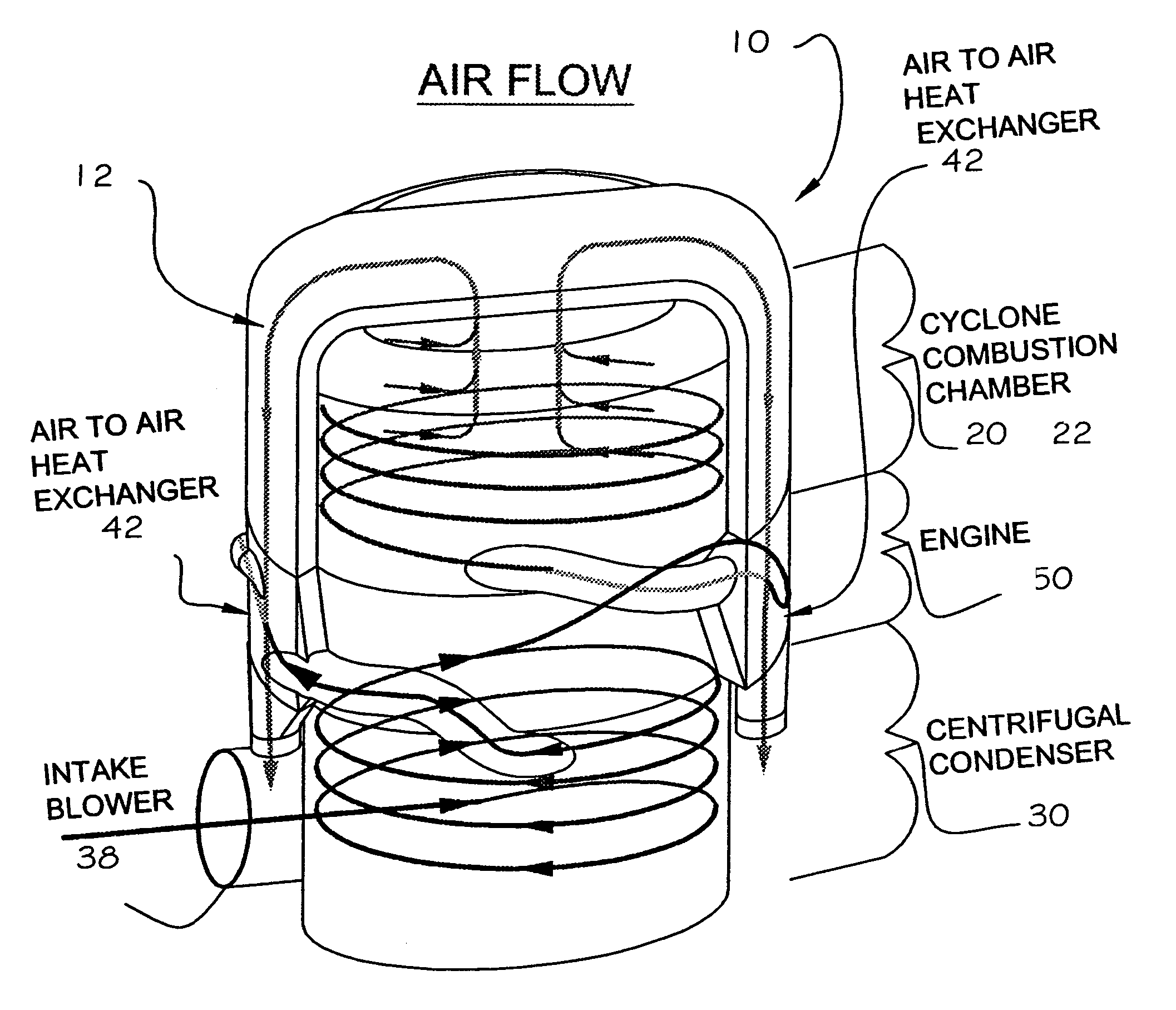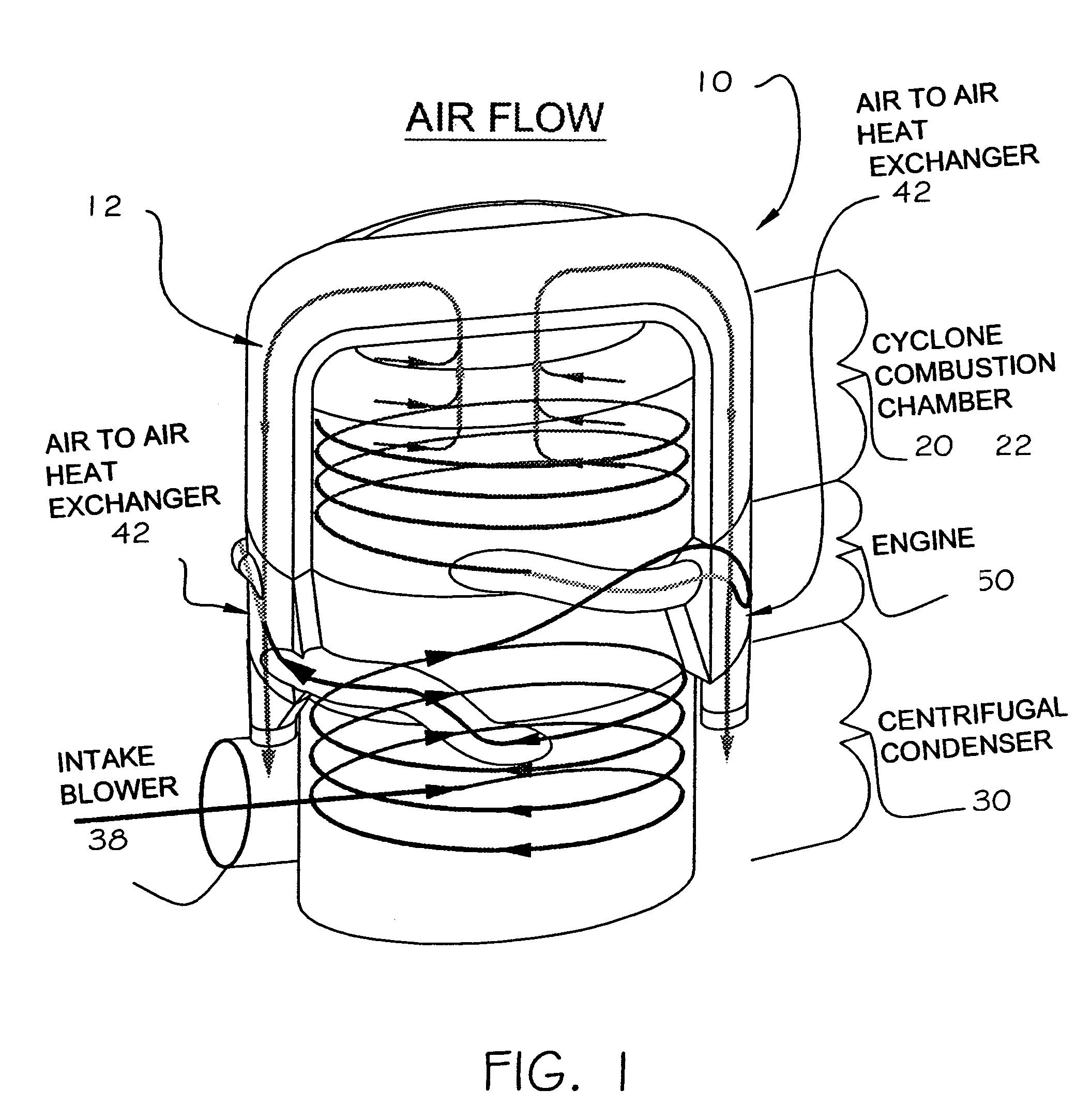Heat regenerative engine
a heat regenerative engine and engine technology, applied in the field of steam engines, can solve the problems of complex engine design proposals, high cost, and large engine expense, and achieve the effects of high efficiency, high efficiency, high efficiency and compactness
- Summary
- Abstract
- Description
- Claims
- Application Information
AI Technical Summary
Benefits of technology
Problems solved by technology
Method used
Image
Examples
Embodiment Construction
[0032]The present invention is directed to a radial steam engine and is generally indicated as 10 throughout the drawings. Referring initially to FIGS. 1 and 2, the engine 10 includes a steam generator 20, a condenser 30 and a main engine section 50 comprising cylinders 52, valves 53, pistons 54, push-rods 74, crank cam 61 and a crankshaft 60 extending axially through a center of the engine section.
[0033]In operation, ambient air is introduced into the condenser 30 by intake blowers 38. The air temperature is increased in two phases before entering a cyclone furnace 22 (referred to hereafter as “combustion chamber”). The condenser 30 is a flat plate dynamic condenser with a stacked arrangement of flat plates 31 surrounding an inner core. This structural design of the dynamic condenser 30 allows for multiple passes of steam to enhance the condensing function. In a first phase, air enters the condenser 30 from the blowers 38 and is circulated over the condenser plates 31 to cool the o...
PUM
 Login to View More
Login to View More Abstract
Description
Claims
Application Information
 Login to View More
Login to View More - R&D
- Intellectual Property
- Life Sciences
- Materials
- Tech Scout
- Unparalleled Data Quality
- Higher Quality Content
- 60% Fewer Hallucinations
Browse by: Latest US Patents, China's latest patents, Technical Efficacy Thesaurus, Application Domain, Technology Topic, Popular Technical Reports.
© 2025 PatSnap. All rights reserved.Legal|Privacy policy|Modern Slavery Act Transparency Statement|Sitemap|About US| Contact US: help@patsnap.com



